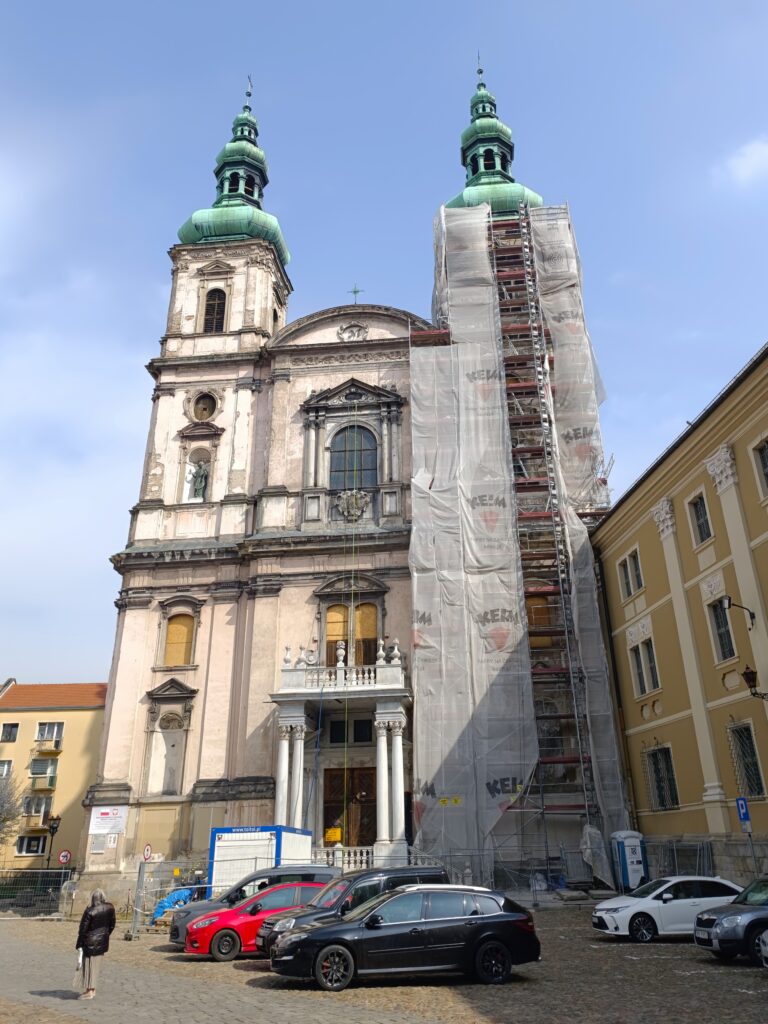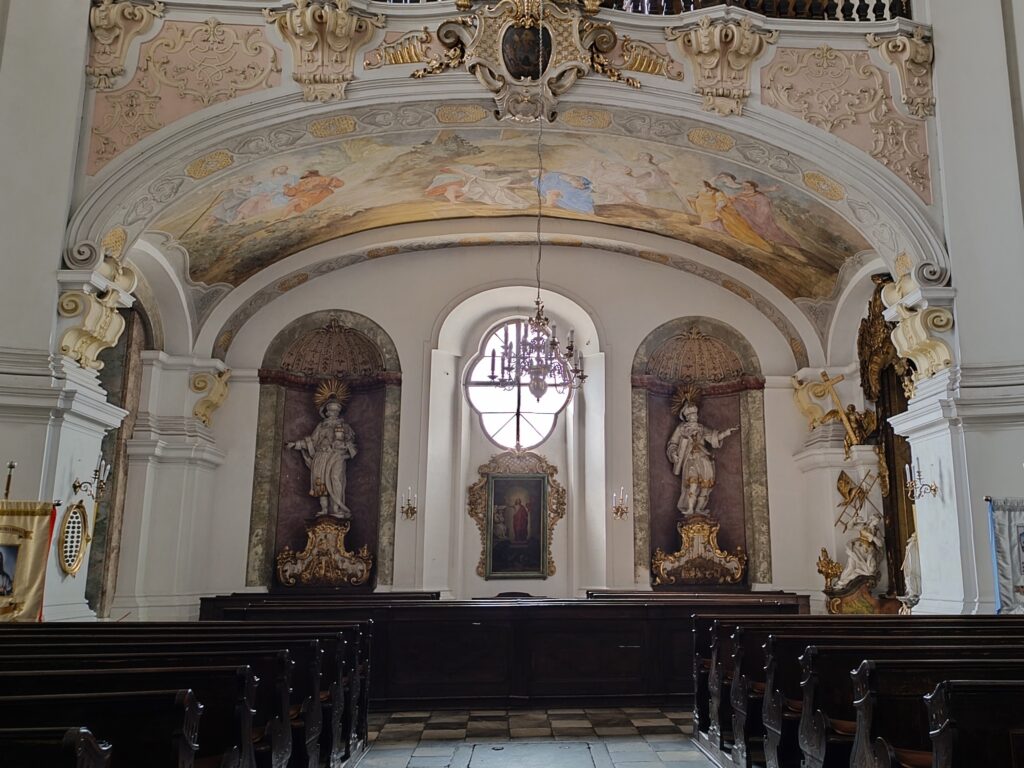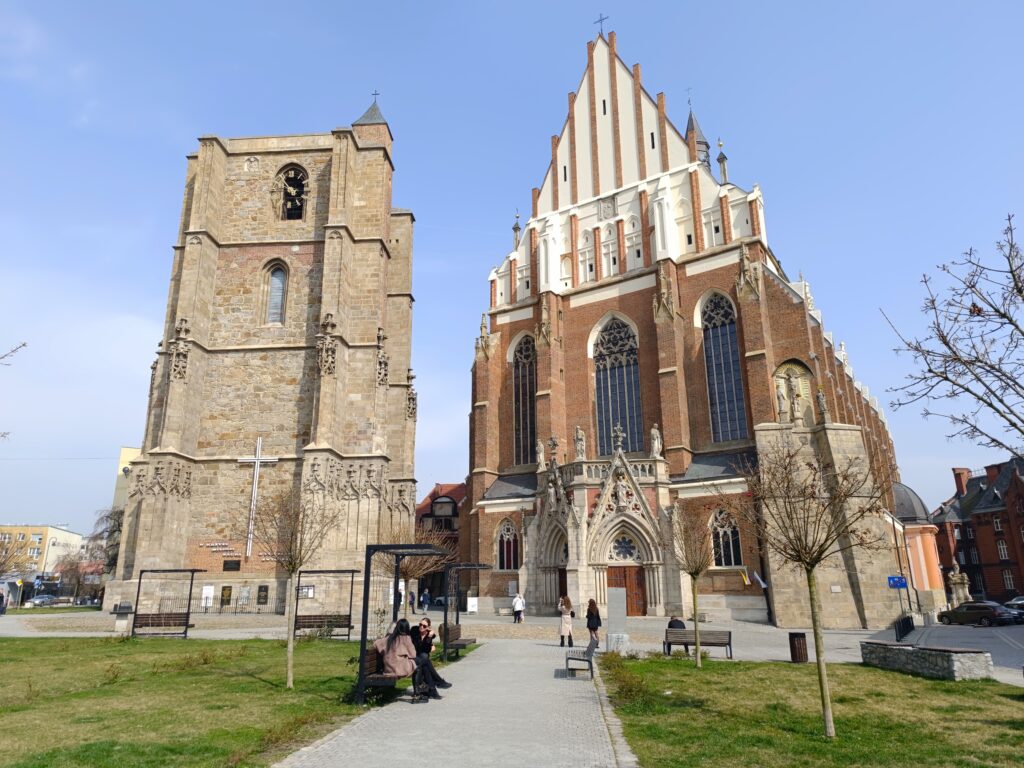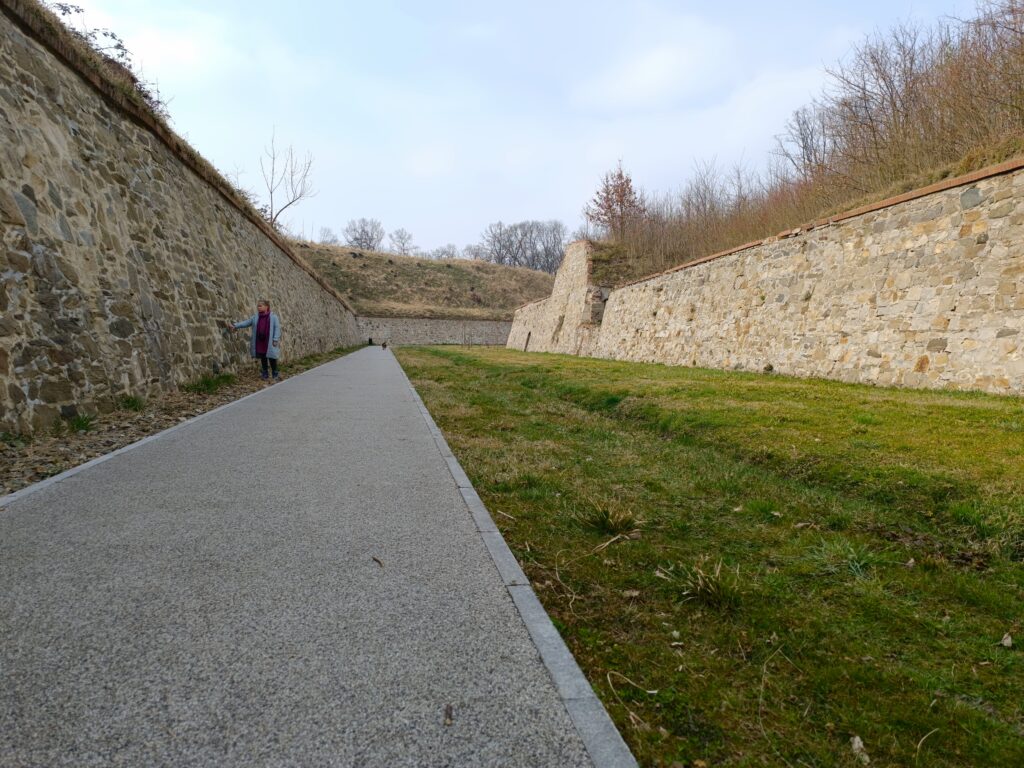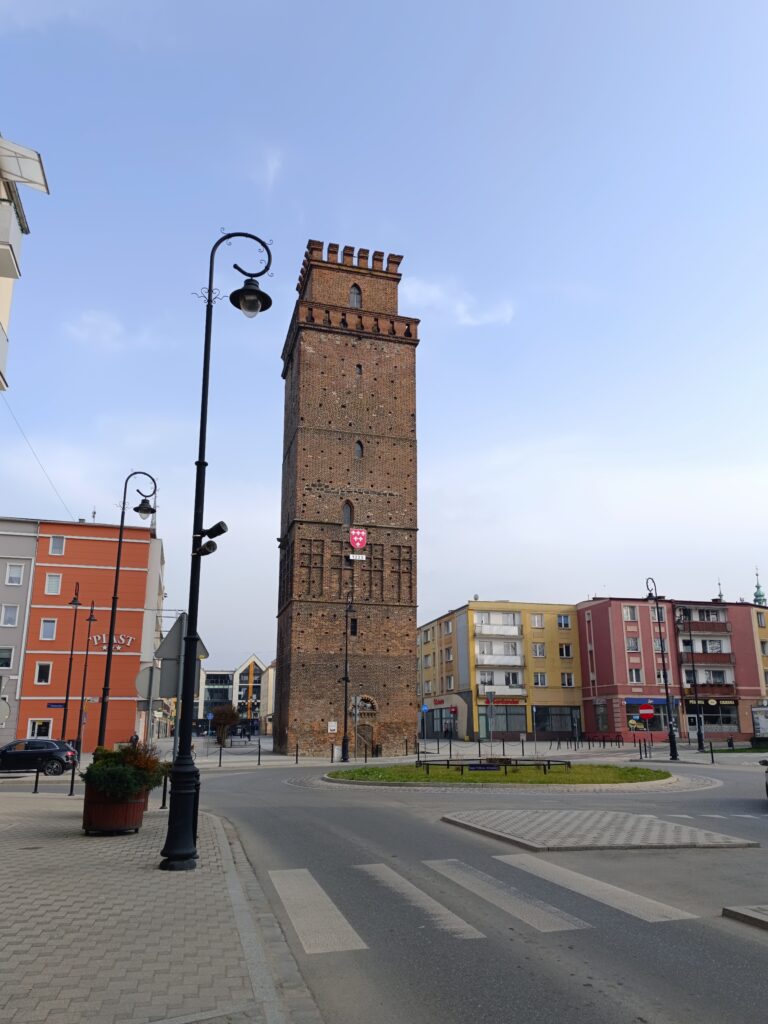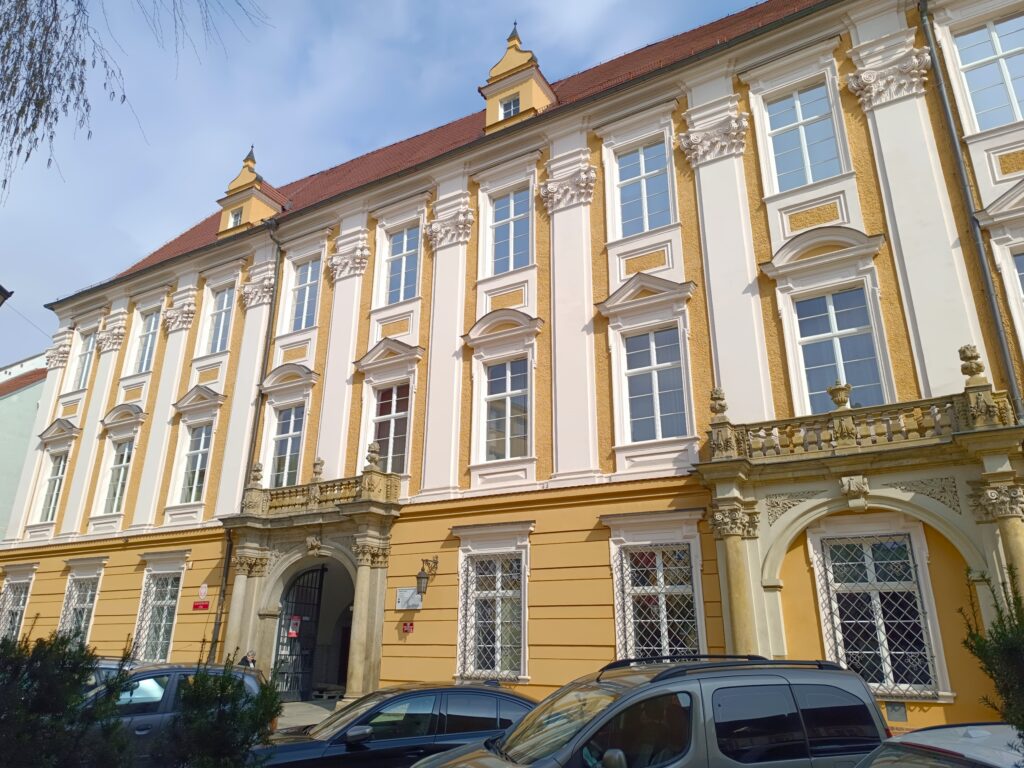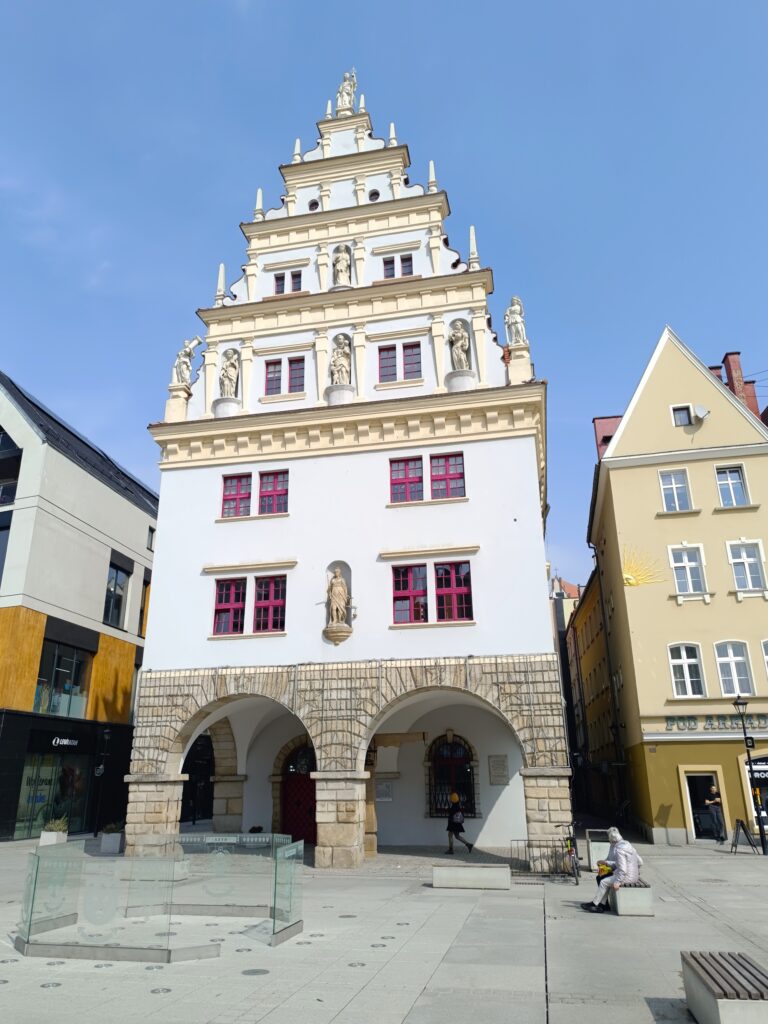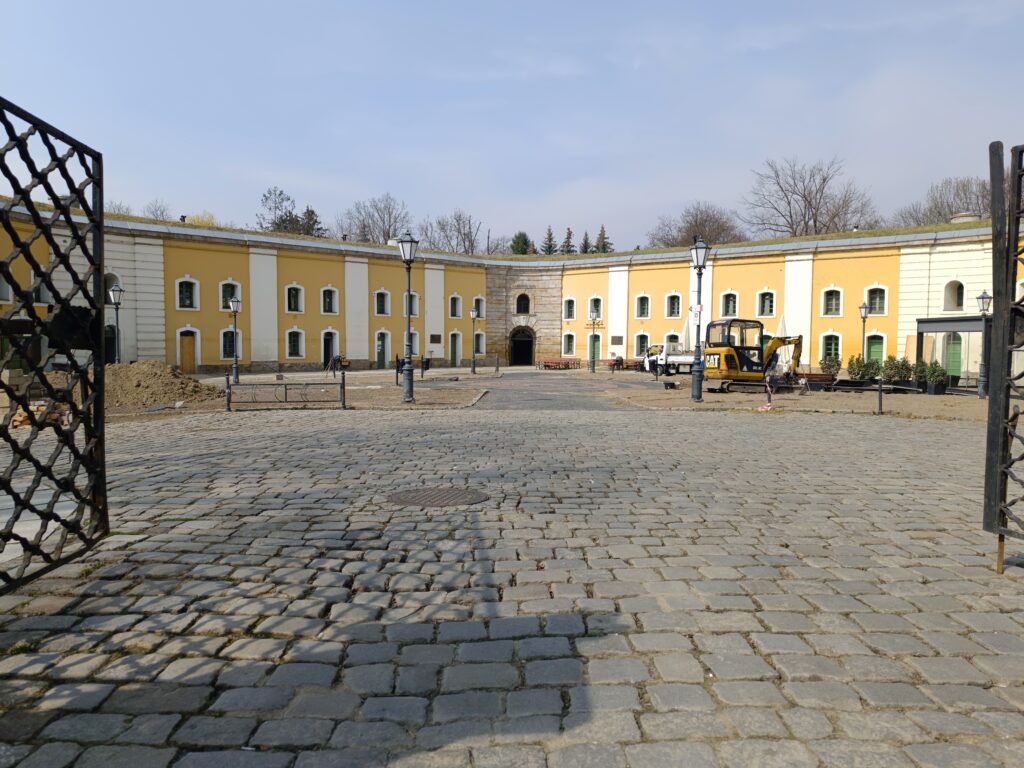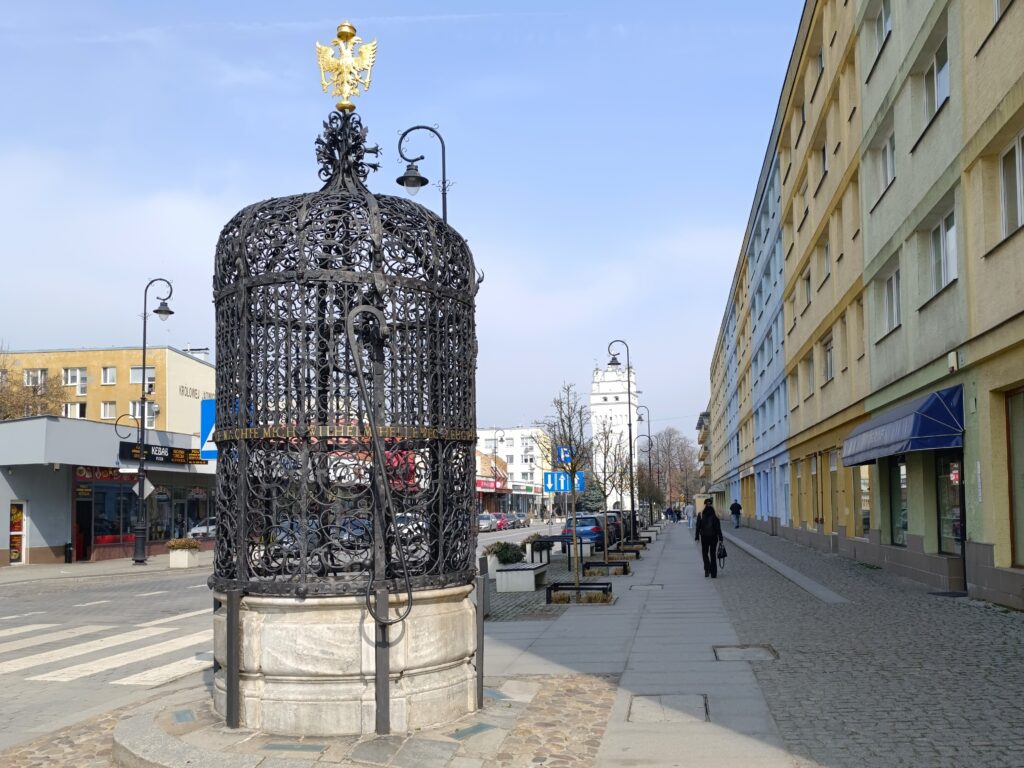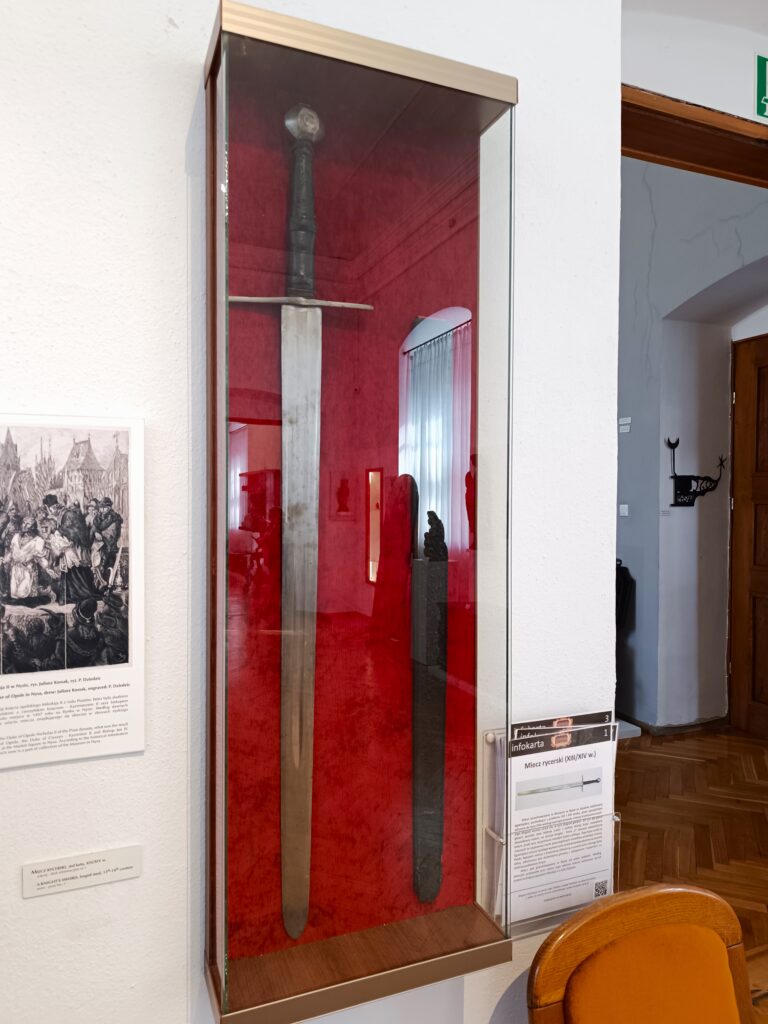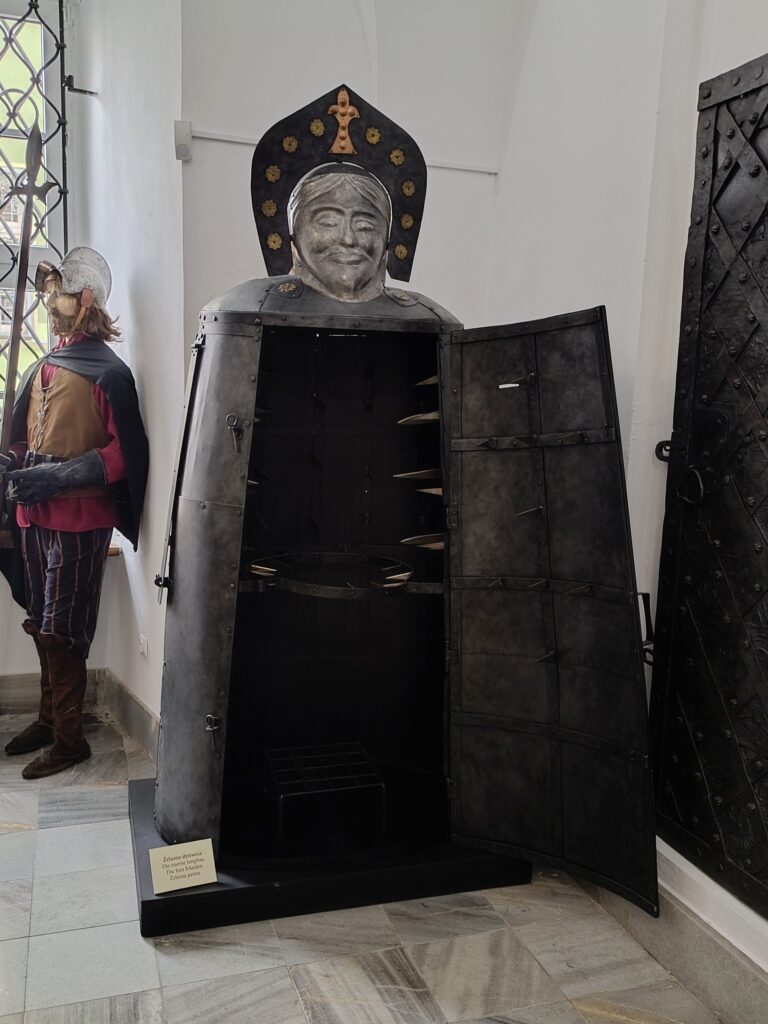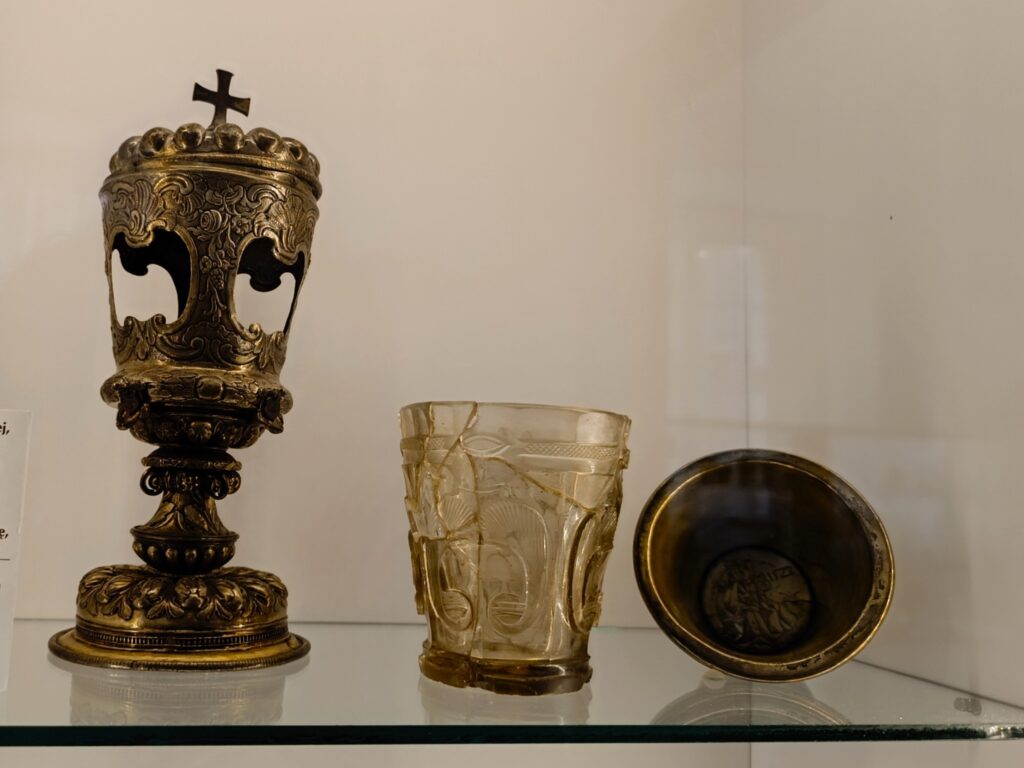All you need to know about the city of
Nysa
Poland
Sightseeing
Nysa is a city with an extraordinarily rich history and numerous attractions. Among them are the well-preserved Fort Prusy, monumental churches, and baroque and modern-era landmarks that adorn the city center.
Curiosities
Nysa is a city with an extraordinarily rich history and numerous attractions. Among them are the well-preserved Fort Prusy, monumental churches, and baroque and modern-era landmarks that adorn the city center.
History
Nysa was the capital of the only theocratic duchy in Silesia, ruled by the bishops of Wrocław. At a time when Silesia was dominated by Protestantism, Nysa remained one of the few Catholic cities in the region—a fact clearly reflected in its architecture.
CONTENTS
- Nysa, Niża, and Nissa
- From Stronghold to Church Rule
- Between the Cross and the Crown
- Nysa at a Crossroads: Poland and Bohemia
- The Hussites at the Gates
- Between the Catholic Throne and the Protestant Sword
- The Silesian Rome under the Prussian Eagle
- The Final Chapter of the Duchy of Nysa
- The Fortress that Became a Prison
- In the Shadow of Ruins
SIGHTSEEING
Fort Prusy
Admission: 25 PLN regular, 20 PLN reduced
Fort Prusy was constructed almost immediately after the Prussians took control of Nysa, between 1743 and 1745. It became a crucial part of the town’s fortress system, which, together with nearby Kłodzko and Srebrna Góra, was intended to defend the western reaches of Silesia. In the 19th century, the fort also served as barracks and a prison. During World War I, a distinctive water tower was built nearby — now an iconic element of the local landscape. Today, Fort Prusy is considered one of the best-preserved forts of its kind in Poland.
Access to the fort is only possible with a guide, so it’s advisable to purchase tickets in advance. The tour lasts around 90 minutes and includes the fort’s history and the purpose of its various sections. Visitors should note that the route leads through dark and sometimes narrow corridors—bringing a flashlight or a fully charged phone for light is highly recommended. The temperature inside remains around 10°C year-round, so dress accordingly.
Basilica of St. James and St. Agnes
Admission: Free
According to legend, the current site of the basilica was once home to a pagan place of worship. Following the Christianization of the region, a wooden chapel was said to have been erected here as early as the 10th century. Other accounts claim that around the year 1000, a wealthy merchant from Nysa founded a church on this spot. What is certain, however, is that the first brick church was built at the end of the 12th century.
The church’s history is as old as that of the town itself. Today, it stands as one of Nysa’s most significant landmarks and the largest sacred building in the city. Its interior features Gothic, Renaissance, and Baroque elements, and some artifacts from the 15th and 16th centuries have been preserved. Sadly, many valuable artworks were lost to wars and fires.
Locals often refer to the basilica as a cathedral—a nod to its historical role as the burial site of eight Bishops of Wrocław, who also held the title of Dukes of Nysa. The heart of Frederick of Hesse, the benefactor of the Great Altar, is also interred here.
Occasionally, the tower next to the basilica opens its doors to reveal the Treasury of St. James — a remarkable exhibition of sacred objects and masterpieces crafted by Nysa’s goldsmiths. These items once belonged to the church and the bishops who resided in Nysa, and they remain a powerful testament to the city’s spiritual and cultural heritage.
Church of Saints Peter and Paul
Admission: Free
The history of this church is closely tied to the Canons of the Holy Sepulchre, a monastic order that arrived in Nysa as early as the 12th and 13th centuries. After losing their previous church—first to a fire and later due to an imperial decree—they established the current church in the 18th century.
The church is considered the most beautiful example of Nysa Baroque architecture. It features richly decorated frescoes, reliefs, and paintings. In front of the entrance, visitors can admire several sculptures, including a notable figure of St. John of Nepomuk.
Church of the Assumption of the Blessed Virgin Mary
Admission: Free
This church was built in the 17th century when the Jesuits were brought to Nysa to strengthen the position of Catholicism in the region. It was the first Jesuit church in Silesia, founded by Charles Ferdinand Vasa. After his death, a gilded capsule containing his heart was displayed annually during a special Mass on his name day, serving as a lasting tribute to his memory.
Today, the church continues to play an important religious role—every year, the pilgrimage to Jasna Góra departs from its walls, making it one of the region’s most significant Catholic events.
County Museum in Nysa
Admission: 15 PLN regular, 10 PLN reduced
This fascinating regional museum offers valuable insight into the history of the town and surrounding area. Its collection is remarkably diverse, featuring several thematic exhibitions. A smaller exhibit is dedicated to the production of coins and medals. A much larger portion focuses on local history, showcasing artifacts from both the medieval and modern periods. There is also a separate section devoted to painting, as well as numerous examples of craftsmanship displayed in rooms arranged in various historical styles. A small room at the end presents the story of the witch trials that took place in Nysa.
The museum is housed in the impressive Bishop’s Palace, which once served as the residence of bishops who ruled over Nysa. In the Middle Ages, a defensive castle also stood here, later rebuilt multiple times throughout different historical periods. In the 19th century, the building was secularized and partially demolished by the Prussian state. Only the representative palace survived. Today, it stands as one of the finest examples of Silesian Baroque architecture and a true architectural gem of the region.
Towers in Nysa
Admission: Free
Two towers in Nysa have survived to this day as remnants of the medieval city fortifications—the Wrocław Tower and the Ziębice Tower. Both were built in the mid-14th century as part of the town’s defensive system. Over the following centuries, the towers and the surrounding walls were modernized and adapted to evolving military technologies. The last major renovations took place as late as the 18th century.
With the city’s expansion and growing urbanization, the fortification system was gradually dismantled during the 19th and 20th centuries. Nevertheless, both towers have survived and remain important symbols of Nysa, serving as reminders of its rich defensive history.
Market Square in Nysa
Admission: Free
The Market Square in Nysa is the city’s central point, where modern buildings blend with historic townhouses from the 16th, 17th, and 18th centuries. Within the square stands the town hall, which was rebuilt only after the destruction of World War II. Next to it rises the city weigh house, dating back to 1604—partially reconstructed after being blown up by Soviet troops. In early modern times, this building was considered one of the most magnificent examples of secular bourgeois architecture.
The square is also home to the monumental Basilica of St. James and St. Agnes, one of the region’s most important religious buildings. Another eye-catching feature is the baroque Triton Fountain, dating from the early 18th century, which is one of the most valuable baroque monuments in Nysa. Following Roman tradition, the townspeople inscribed the fountain with the letters S.P.Q.N.—Senatus Populusque Nissiensis, meaning “the senate and people of Nysa.”
St. Hedwig’s Bastion
Admission: Closed
This is one of Nysa’s many fortifications. The bastion was originally built during the Habsburg rule and later rebuilt and modernized after the Prussians took control. In the 19th century, it served as a prison before being sold into private hands. In 2008, it underwent a thorough renovation and was opened to visitors. Unfortunately, in 2024, it was once again damaged due to flooding. As of today (May 9, 2025), restoration work is still ongoing to bring it back into use.
CURIOSITIES
The Dark History of Witch Trials
Most people have heard of the trials and burnings of witches. These medieval and early modern events are typically associated with Western Europe. However, few know that such trials also took place in Nysa—and on a much larger scale than in other parts of Silesia.
Although the office of inquisitor existed in the city as early as the 14th century, witch trials were initially extremely rare. The real witch hunt began later—in 1622, and again during the periods 1639–1642 and 1651–1652, when it became evident that eliminating “witches” and seizing their property could bring significant financial gain.
A common interrogation method was the water ordeal. The accused was submerged in water with a stone tied to them. If they began to drown, they were deemed innocent. If they floated—they were sentenced to be burned at the stake. Other torture devices included the spiked inquisitor’s chair and the so-called iron maiden.
One of the most notorious figures in this activity was Johann Balthasar Liesch von Hornau. Official records document 27 victims of his trials, but evidence suggests there were many more. So many people were arrested that additional prisons had to be constructed. Liesch von Hornau also ordered the construction of a special furnace used for interrogations—a person could burn in it for up to three hours while confessions were extracted. If the accused admitted guilt, they were “mercifully” executed with a sword through the heart.
The last documented burnings took place in 1683–1684, when two women and one man were executed. These victims marked the end of the witch hunts in Nysa. A later case occurred in 1715, but the accused was sent to a psychiatric hospital instead.
Last Hope: The Legend of Beautiful Well
While strolling through the streets of Nysa, one may come across an interesting site known as Beautiful Well (Piękna Studnia). Built in the 17th century, it is connected to a peculiar legend. During the Thirty Years’ War, the Swedish army besieging the city poisoned Nysa’s wells in an attempt to force the townspeople to surrender. When only one working well remained, guards were assigned to protect it. However, even this measure failed—the Swedes managed to distract the guards, and after poisoning the final source of water, Nysa was forced to capitulate.
The Beautiful Well was built to ensure such a situation would never happen again. It was erected at the site of the last functioning well, fitted with a special pump, and secured with a sturdy grate. It served the residents until the end of the 19th century, when the city’s first water supply system was launched.
The Partitions Began in Nysa
The early 18th century was marked by three Silesian Wars, during which Prussia and Austria fought over the annexation and retention of Silesia. These conflicts lasted, with brief interruptions, from 1740 until 1763. However, just six years later, the monarchs of both countries buried the hatchet and met in Nysa to sign a treaty that would profoundly impact the history of Poland.
This was connected to the outbreak of the Bar Confederation in 1768 in the Polish–Lithuanian Commonwealth, which aimed to overthrow royal authority and limit Russian influence. Additionally, the Ottoman Empire declared war on Russia, further complicating the situation for the empire.
Observing the political chaos in the east, the King of Prussia and the Emperor of Austria met in Nysa in 1769 to develop a joint policy in response to these events. It was there that the decision for the first partition of Poland was made. That same year, the Austrians occupied the disputed territories of Spiš and Orava in exchange for supporting Russia in its war with Turkey. The following years were spent working out the details to maintain a balance of the conquered lands.
The Mystery of Saint Hedwig of Silesia’s Three Goblets
The museum in Nysa holds in its collection a unique item connected to a medieval saint —Hedwig of Silesia. She was a 13th-century duchess who strove to live according to Christian principles. She wore a nun’s habit, slept on a hard bed, and constantly went barefoot. When advised to wear shoes, at least in winter, she would carry them slung over her shoulder instead. The duchess founded many religious institutions and was actively involved in helping the poor.
Her veneration began shortly after her death. In 1267, she was canonized and became the patron not only of Silesia but of all Poland. According to legend, she left behind three miraculous goblets that had the power to turn water into wine. The first, gifted to Wrocław, was lost during World War II. The second was sent to Kraków and remains at Wawel Castle to this day. The third, originally given to the town of Brzeg, was moved to Nysa in the 17th century, where it can still be seen today.
Betrayal, Assassination, and Execution
Another fascinating story is connected to 15th-century Nysa. In 1497, a regional assembly was held in the city, attended by many Silesian Piasts. Casimir II, Duke of Cieszyn, organized the meeting to negotiate with Vladislaus II Jagiellon for the confirmation of privileges granted to Silesian dukes. Another reason for the gathering was the growing threat from the Turks.
Among those present was Nicholas II of Niemodlin from the Opole branch of the Piast dynasty, who was in conflict with both Casimir II and the Bishop of Wrocław, Jan Roth. For reasons that remain unclear, Nicholas attacked them both with a dagger, wounding them. Thanks to the swift intervention of courtiers, he was prevented from causing more harm and fled to the Church of St. James.
Contrary to custom, guards stormed the church and captured Nicholas, imprisoning him in a dungeon. He was immediately brought before the municipal court, even though, as a duke, he should have been judged only by the royal court. The verdict came swiftly, and the sentence—death by beheading—was carried out without delay. His final words before execution were said to be: Oh Nysa! Nysa! Was it for this that my ancestors gifted you to the Church, that you should now take my life?
It is worth noting that the entire story is known mainly through accounts given by the local nobility of Nysa, and how faithful these are to the truth is difficult to determine today. However, both Casimir and Jan Roth stood to benefit from the duke’s death. The sword used to execute Nicholas II remains in the collection of the Museum in Nysa to this day.
The Legend of the Saving Rain
During the Thirty Years’ War, in 1642, Protestant Swedish forces captured Nysa. They forced the townspeople to hand over large sums of money and plundered the city. But that was not enough—Nysa, as a center of Catholicism in Silesia, was a symbolic target. The Swedes set the city on fire and departed, leaving it to be consumed by the flames.
Facing destruction, the residents took refuge in the Church of St. James, where they began to pray fervently for salvation. According to legend, their prayers were answered—a sudden downpour fell, extinguishing the fire and saving Nysa from complete ruin. This event strengthened the veneration of Saint James, and for many years, annual processions were held to commemorate the miraculous rescue of the city.
The Pride of the People's Republic on Four Wheels
An interesting relic from the time of the Polish People’s Republic is the establishment of the Light Commercial Vehicle Plant (Zakład Samochodów Dostawczych) in Nysa. At that time, the market lacked small delivery vehicles with a payload capacity of up to 1,000 kg, so in 1956–1957, work began on a vehicle designed to fill that gap. It was named ZSD Nysa—after the city where the factory was located.
The vehicle underwent modernization until the late 1960s, with continuous increases in production and available versions. In the following decades, the ZSD Nysa not only dominated the Polish market but was also exported to as many as 35 countries, including Iraq, China, Egypt, Colombia, Ghana, France, Spain, and several Eastern Bloc states.
Production ended in 1994, giving way to more modern models such as the Polonez. The factory itself struggled with financial problems for many years and, despite efforts to stay afloat, was ultimately removed from the national business register (KRS) in 2007.
HISTORY
Nysa, Niża, and Nissa
The origin of the city’s name is fairly straightforward — it most likely comes from the river that flows through it, the Nysa Kłodzka. In the Middle Ages, this river was also known as Niża, which may have meant a low-lying river or stream, and in Latin documents it appeared as Nissa.
There is also another theory suggesting that the city’s name derives from the old Proto-Indo-European word ny, meaning moisture or wetlands.
From Stronghold to Church Rule
Nysa is one of the oldest cities in Silesia, first mentioned as early as the year 991. The founding of a Polish stronghold in this area is attributed to Bolesław the Wrymouth. However, the town did not initially hold a prominent position; documents indicate that it was under the authority of the castellany in neighboring Otmuchów.
This changed at the beginning of the period of Poland’s territorial fragmentation. Nysa and Otmuchów were given to Jarosław of Opole as a gift from his father. Jarosław was not only the Duke of Opole but also the Bishop of Wrocław. Deeply devoted to his faith, he bequeathed the land of Nysa in his will to his successor as bishop. In this way, every new Bishop of Wrocław also became the ruler of Nysa.
In 1223, the first municipal rights were introduced. Later, in 1308, Magdeburg law was added, granting the right to trade and host assemblies. The first Christian churches were also being built, including the Church of St. James. By 1260, the first bishop’s palace was already documented, indicating the wealth of the developing city. This also marked the time when the bishops officially moved their seat from Otmuchów to Nysa.
Between the Cross and the Crown
The 13th century, unfortunately, also marked the Mongol invasion in the annals of history. Nysa was unable to defend itself against the invaders and was destroyed in 1241. But that was not the end of difficult times. A significant role was also played by the conflict between Tomasz II Zaremba, Bishop of Wrocław, and Henryk IV Probus, Duke of Wrocław.
The two clashed repeatedly in legal disputes—Tomasz II aimed to make ecclesiastical power independent, while Henryk IV opposed the Church’s acquisition of land in the aftermath of the devastating Mongol invasion. As early as 1282, the bishop’s court in Nysa was fortified and turned into a castle. However, this did not save the city — in 1285, Henryk IV captured and destroyed Nysa.
Tomasz fled to Racibórz, where he consecrated a distinctive chapel (see here). Eventually, with the arrival of Wrocław’s military forces, he was forced to submit to ducal authority. Interestingly, on his deathbed in 1290, Henryk IV fully confirmed Nysa’s autonomy by granting Tomasz II the title of Duke of Nysa. This title was used by all subsequent Bishops of Wrocław, leading to the formation of the Duchy of Nysa.
Nysa at a Crossroads: Poland and Bohemia
Another significant moment in the history of Silesia came in the year 1327. At that time, nearly all Silesian dukes paid feudal homage to John of Luxembourg, the King of Bohemia. Shortly thereafter, Casimir the Great formally renounced his claims to Silesia, tying the region to Poland’s western neighbors for many years to come.
Not all duchies immediately agreed to come under Bohemian influence. One of the few exceptions was the Duchy of Nysa. This status remained until the rise to power of Przecław of Pogorzela—a Silesian clergyman closely associated with John of Luxembourg.
In 1342, Przecław paid homage to the King of Bohemia, thus joining the other Silesian dukes. He also played a key role in helping John avoid ecclesiastical penalties. Despite placing Nysa under Bohemian rule, Przecław made a major contribution to the region’s development — he funded numerous religious buildings and brought various Christian orders into the area.
The Hussites at the Gates
In the 14th century, Nysa underwent a phase of architectural transformation. The castle and the city were surrounded by defensive walls. The wealthiest residents also began converting their homes into stone structures. At the beginning of the 15th century, the city continued to develop—the first gymnasium and an orphanage were established. By 1424, Nysa’s population was estimated at 5,000, making it one of the most populous cities in Silesia.
Meanwhile, a series of devastating wars broke out in neighboring Bohemia. As a result of actions taken by the Pope and the German Emperor, the Czech reformer Jan Hus was arrested and executed for heresy. In response, the Czechs launched an uprising aimed at overthrowing Catholic authority in their country. This triggered a series of unsuccessful crusades against them, now known as the Hussite Wars.
After defeating the crusaders, the Czechs invaded Silesia, which supported the Catholic camp. In 1428, the Battle of Nysa took place. The Hussites crushed the Nysa forces, who were supported by other Catholic dukes. The fighting led to the complete destruction of the old town. However, the modern fortifications protecting the newer part of the city withstood the assault, and the Czechs abandoned the siege, turning their attention to battles in nearby Prudnik (see here).
Between the Catholic Throne and the Protestant Sword
Nysa quickly recovered from earlier wartime turmoil. The 15th century was a period of intense reconstruction and further expansion of the city. New churches were built. Nysa became a city recognized not only in Silesia but throughout Central and Eastern Europe. In 1473, peace negotiations between the kings of Poland and Hungary—both seeking the Bohemian crown—were held in the city. The coat of arms of Nysa was placed in Prague, on Charles Bridge, among the symbols of the most distinguished Czech cities.
At the beginning of the 16th century, power in Bohemia passed into the hands of the Austrian Habsburgs. For the Silesian dukes, this meant entering the sphere of influence of Catholic Austria. In the case of Nysa, ruled by the bishops of Wrocław, it only strengthened the dominance of the Catholic clergy.
Shortly after the beginning of the Protestant Reformation, the bishops of Wrocław moved their permanent seat to Nysa, as Lower Silesia had become largely dominated by Lutherans. As a result, the rulers leaned more toward the role of Dukes of Nysa than Bishops of Wrocław.
Being subject to the Habsburg Empire had yet another consequence. At the beginning of the 17th century, when the Thirty Years’ War began—a military conflict between Protestants and Catholics encompassing almost all of Europe—Nysa became one of the potential wartime targets.
As early as 1620, the city was invaded and burned by Protestant forces from Silesia, led by John George of Hohenzollern. The destruction led to the city’s bankruptcy. In 1632, Saxon troops entered Nysa, but were quickly driven out by the Habsburgs. Just a year later, Nysa was briefly taken by the Danes, and the following years brought famine and epidemics that decimated the population. In 1642, Nysa was captured by the Swedes, who, by poisoning the wells, caused yet another wave of death. Additionally, they ravaged and burned part of the city.
The Silesian Rome under the Prussian Eagle
After the end of military operations, the city underwent reconstruction. Capuchin monks were brought to Nysa, where they built their own church. The now well-known Church of the Assumption of the Blessed Virgin Mary was also erected. The city modernized its defensive walls and gained new landmarks, such as the Beautiful Well and the Triton Fountain, modeled after Rome’s Fontana del Tritone. Thanks in part to the latter, Nysa began to be called the Silesian Rome.
In the 18th century, a series of conflicts between Austria and the rising power of Prussia occurred—known as the Silesian Wars. As a result, in 1741, most of Silesia was lost. The Duchy of Nysa, however, was divided—while the city itself became part of Prussia, towns like Jeseník and Vidnava remained under Austrian control.
Recognizing Nysa’s strategic location, the Prussians decided to build a modern system of forts to secure the region. Soon, Nysa became one of the largest fortresses in Europe. The fortification system was closely integrated with the city, whose inhabitants worked to maintain it.
The Final Chapter of the Duchy of Nysa
At the beginning of the 19th century, the fortress faced its first serious test—the Napoleonic Wars. As early as 1807, Nysa was besieged by French forces. Unfortunately, due to shortages in supplies and ammunition, the Prussians were forced to surrender the city. This, however, was not the fault of the fortifications, but rather the result of garrison neglect and insufficient provisions. Soon after this defeat, the defensive system was further expanded.
In 1810, the Kingdom of Prussia was forced to pay war reparations to France. To raise the necessary funds, a secularization process was carried out throughout the country—including in Nysa. This meant the state seized all church property, bringing a definitive end to the Duchy of Nysa, which for centuries had been ruled by bishops. Additionally, a few years later, after a fire in the bishop’s palace, it was decided to demolish the building entirely.
The Fortress that Became a Prison
The fortification system significantly hindered the city’s development by preventing expansion beyond its existing borders. Nevertheless, in the second half of the 19th century, many major infrastructure projects were undertaken. The first railway connection with Brzeg was established; a theatre, a new hospital, a gasworks, waterworks, and sewage systems were constructed; and at the beginning of the 20th century, electricity was introduced. Finally, in 1903, Nysa lost its fortress status, which allowed further urban growth.
This progress, however, proved to be of little lasting benefit, as World War I broke out in 1914. The Nysa fort was then converted into a prison, where, among others, Charles de Gaulle—later leader of Free France and President of France after World War II—was held.
As is well known, Germany lost the First World War, and following numerous battles and negotiations, the Second Polish Republic re-emerged on the map, reigniting the question of Silesian sovereignty. This was particularly evident in Upper Silesia, where a series of Silesian Uprisings took place. Nysa, long heavily Germanized, did not experience these conflicts directly, but once again its fort was used—this time to hold Polish prisoners.
In the Shadow of Ruins
During World War II, Nysa played no major military role. However, due to its strategic location, commanders of the Third Reich placed great importance on holding the city. Despite this, they were unable to stop the advancing Red Army, which captured Nysa after two days of fighting. During this time, Soviet soldiers raped and murdered several dozen nuns who had stayed behind to care for the wounded and sick instead of evacuating. Around 50% of the city’s buildings were also destroyed.
When the city came under the administration of the Polish People’s Republic, only a few hundred residents were granted citizenship; the rest of the population consisted of Poles relocated from the Eastern Borderlands. After the war, internment sites were established, where Germans, Silesians, Poles from General Anders’ army, and Home Army soldiers were detained. Two labor camps operated here.
The following years were spent largely on rebuilding the city, which only began to truly develop again in the mid-20th century. In 1984, the bishop’s palace was rebuilt, and the Nysa museum was relocated there. After the restoration of local self-government, Nysa became the center of Nysa County. Despite the extensive wartime destruction, it remains to this day one of the brightest jewels of the region—remarkable for both its architecture and its rich history.
Oko na Świat © Artur Gołębiowski

